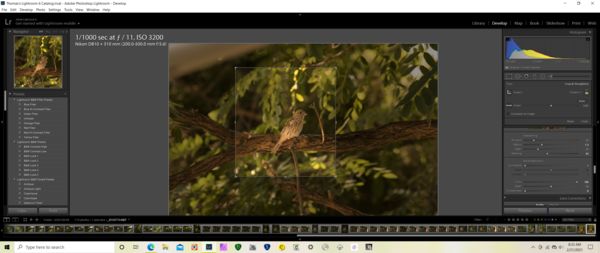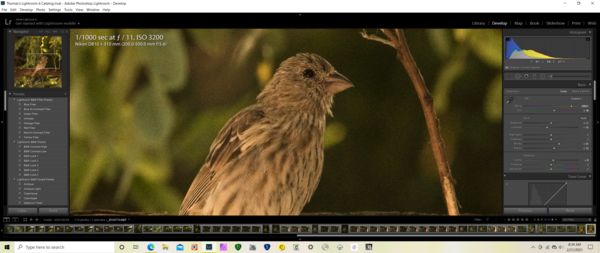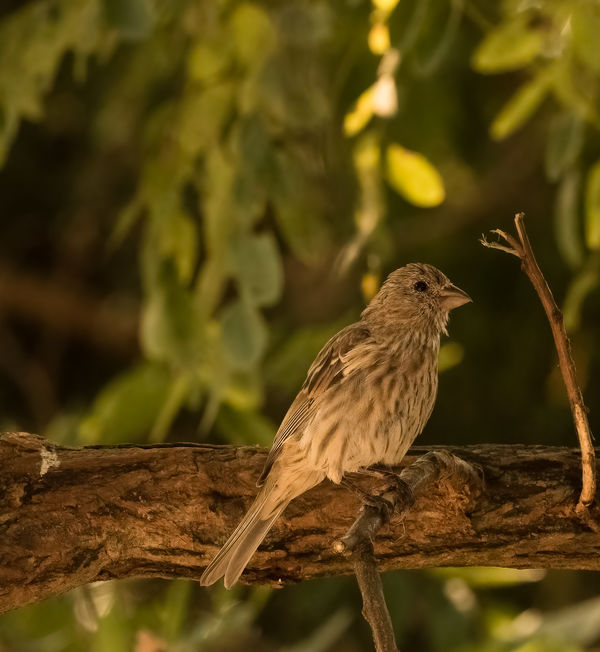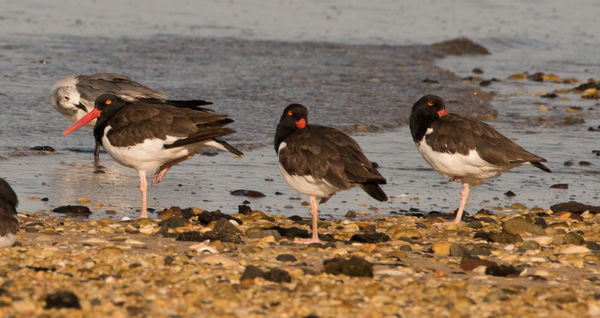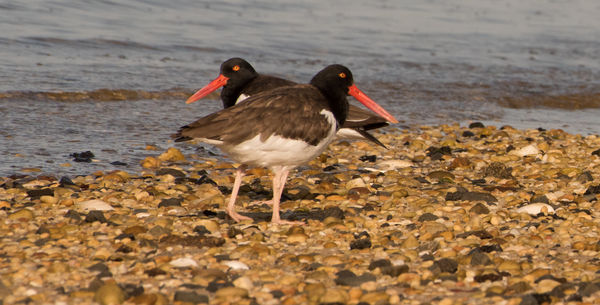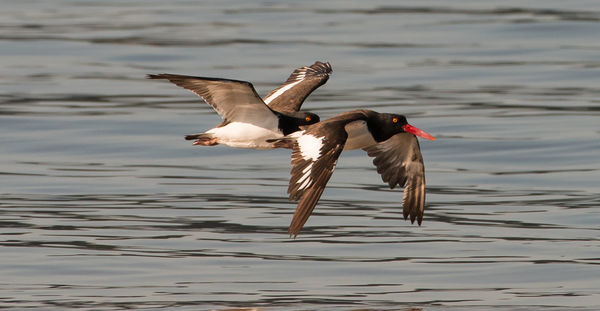Low Light Photography
Feb 21, 2021 07:14:41 #
tcthome
Loc: NJ
larryepage wrote:
There have been several discussions lately around ... (show quote)
I was going to ask you start a thread (or lesson to learn from) to see what you were talking about.
Feb 21, 2021 07:22:20 #
tcthome
Loc: NJ
larryepage wrote:
Here is the snapshot that I promised. Camera was ... (show quote)
The camera better ISO thing probably was mentioned because of the wildlife thing with sometimes needed high shutter speeds in low light usually resulting in much higher ISO. Glad you came back with this thread & nice photo. When I watch a video or read a article about photography, I will try to stick it out to the end no matter what because if I pick up one tip that will hopefully improve my photography.
Feb 21, 2021 09:16:09 #
While I agree with the original premise, in that technique is indeed important, as it always is in any type of photography, this does not negate the value of discussing the low light capabilities of our equipment. There can be and is a big difference in the performance levels between some cameras in this area and I for one see this one aspect as probably the single most important characteristic in justifying moving up to a new camera body. This may not be the primary feature for some, but considering the cost of a new camera or complete system these days, doing the research and trying to get the best bang of the bucks is almost universal out there, especially for us older retirees on a fixed income, etc.
I currently shoot a Pentax K3, which I bought used about 3 years ago, due to it's overall bang for the bucks and it's ability to use some older lenses I already owned from my days of shooting film. Frankly, it has proven itself to be a fine camera, however, it's low light performance is the one issue that I have with it and rarely shoot above 800 ISO because of it. Anyway, if I was to spend the money on another camera body, it would have to have far better low light ability and I would want feedback from others before plunking down the kind of scratch needed for this type of upgrade.
Frankly, I think this sort of discussion is primarily what this site is all about in the first place and complaining about posts that wish to discuss performance characteristics, especially of new models seems rather counterproductive to our overall purpose here. While I do agree that technique is a factor in getting the most from your equipment, I also see nothing wrong with wanting better equipment and the need to discuss it on this site. Frankly, sales of new equipment is what really drives an already shrinking industry and our discussions here could actually be beneficial in the long run. It's fine if you don't want to participate or get tired of this sort of post, but saying a performance issue doesn't really matter and it's my technique that needs to be improved is an assumption at best and in my opinion somewhat of a disservice to us all. Good luck and good shooting to all.
I currently shoot a Pentax K3, which I bought used about 3 years ago, due to it's overall bang for the bucks and it's ability to use some older lenses I already owned from my days of shooting film. Frankly, it has proven itself to be a fine camera, however, it's low light performance is the one issue that I have with it and rarely shoot above 800 ISO because of it. Anyway, if I was to spend the money on another camera body, it would have to have far better low light ability and I would want feedback from others before plunking down the kind of scratch needed for this type of upgrade.
Frankly, I think this sort of discussion is primarily what this site is all about in the first place and complaining about posts that wish to discuss performance characteristics, especially of new models seems rather counterproductive to our overall purpose here. While I do agree that technique is a factor in getting the most from your equipment, I also see nothing wrong with wanting better equipment and the need to discuss it on this site. Frankly, sales of new equipment is what really drives an already shrinking industry and our discussions here could actually be beneficial in the long run. It's fine if you don't want to participate or get tired of this sort of post, but saying a performance issue doesn't really matter and it's my technique that needs to be improved is an assumption at best and in my opinion somewhat of a disservice to us all. Good luck and good shooting to all.
Feb 21, 2021 10:04:09 #
Gene51 wrote:
Your example shows a scene with an EV (exposure va... (show quote)
Impressive example ........love that Sony .......thanks for sharing
Feb 21, 2021 10:18:43 #
tcthome
Loc: NJ
Why I don't consider 400 ISO very high, there are instances like wildlife where you can't always get it that low. ISO 3200 , F11, Shutter speed 1000. I probably could of taken this photo at a slower shutter speed but the tree limbs were moving as were the birds on the branches & back & forth to the feeder. I believe all the photos taken this day were between 1000 & 1600. Auto ISO with the birds moving in & out of changing light. I'm pretty sure the 3rd photo went threw Topaz Denoise. If has a tif extension, it did. D810, Nikon 200-500 f5.6
Feb 21, 2021 10:34:57 #
tcthome
Loc: NJ
A couple more photos. Good light is not a problem. First two photos taken at 1/1600, f11, ISO 640. Third was the same with ISO 800. Pretty sure these photos are straight out of camera. I would need to go back into LR6 to know for sure. If any, not much was done.
Feb 21, 2021 11:09:27 #
larryepage
Loc: North Texas area
Bison Bud wrote:
While I agree with the original premise, in that t... (show quote)
I read this after I wrote it. It rambles some. I've decided to post it anyway. We can sort it out later if necessary. So here goes:
I think maybe I wasn't clear in my intent. While I still have and use my D200 (because I still love the characteristics of the CCD sensor), I now primarily use a D500 and D850. In between, I had a D300, which was, at the time, a huge improvement over the D200, but is far short of the capabilities of either the D850 or the D500. Even so, there are things that the D850 (or D750 or Z6 or whatever camera you might want to list) just won't do. And while technique is important, and while at least some knowledge is important, there are inherent limits in performance that we just can't get past. Handheld photography with a D850 in my backyard at 2 AM with lighting only from our small rechargeable LED landscape light is certainly possible, but it requires use of an ISO level that yields only two or three stops of dynamic range and plenty of grain in the image. That doesn't mean that I've never had occasion to capture such an image, but I do know that it is never going to be a bright, well-saturated art image. Let me add a tripod to the mix and I can do quite a bit better, but there will still be some limitations.
So first...know and understand the limitations. That doesn't mean that you can't devise ways to minimize them, but you do have to understand them. Part of that is knowing, as you indicate, what ISO level you can use with your camera and still get results that are acceptable to you. Once you know that and understand the constraints it implies, then you can begin looking at other adjustments...VR lenses, tripods, supplemental lighting, any number of possibilities.
But the nature of light and the design of our sensors and the interactions that the laws of physics describe for us mean that there is always going to be a limit beyond which a camera can go. That limit will be different for different cameras, but it will always be there. We are also at a point where the difference among the best performing cameras is mostly pretty trivial. But the difference between what we can do with any of the best cameras today is much and what we could do with the best cameras eight or nine years ago i huge. Yes...equipment capability matters. No, the difference does not. At least not really. I mentioned night sky workshops earlier. They have all been interesting. Evn when focusing on what you are trying to do yourself, it is impossible to avoid getting drawn into the difficulties others are experiencing. There are always some for whom the supplemental lighting (for buildings or whatever) that is perfect for you is just not working for them. They need more, with the result that your images gt blown out and you have to reduce your own exposure to less than optimum in order to accommodate them. Was it an equipment limitation? Sometimes. Was it an understanding limitation? Sometimes. Was it an inability or unwillingness to follow instructions? Sometimes.
Most of what we do in photography is really not that complicated at its core. It can be learned. There are a number of ways to learn. The best is partnering with someone who can tell you, explain to you, and show you what to do, then do it all again if necessary. The risk is that because it's not complicated, sometimes it's hard to have the patience to do that repetition thing for someone just learning. And it can be hard to have the patience to keep trying if things don't work just righth the first time.
Feb 21, 2021 11:21:06 #
larryepage wrote:
Yes, you are correct. It is an expensive lens. It is quite maligned here, but I still use it on my D500 (just ordered new rubber rings for it). I think the fact that it is still in production after 18 years speaks reasonably highly for it. By the way...it does not have VR.
One really good way to shop for cool lenses is to choose the ones Hogsters love to gang up and hate on.
Hogsters are such parrots. Apparently, hogs really CAN fly ;-)
Feb 21, 2021 11:24:01 #
larryepage wrote:
There have been several discussions lately around ... (show quote)
I more or less agree with you. I have taken low light level photographs with film as far back as 1977 using Tri-X film and a 1:1.7 50mm lens. No tricks other than a tripod and shutter cable for long exposures.
Feb 21, 2021 12:08:26 #
larryepage wrote:
Here is the snapshot that I promised. Camera was ... (show quote)
Very nice image Larry. Like it a lot. When I bought my D3400 I replaced the kit lenses with the Tamron 17-50 and 28-75 f2.8 constant aperture lenses. Even tho the camera will produce nice images at high ISOs it Allows me to shoot more in low light without cranking up the ISO real high. I have found that it’s the lens more than the camera on modern CMOS DSLRs. But two of my cameras are CCD sensors and the lenses don’t really help as much in low light.
Feb 21, 2021 13:19:34 #
I just bought this lens, used, for $275.00 (I know, I was very surprised). Testing, and close examination without tearing into the barrel, SO FAR has proved this to be an excellent buy for me. The lens is in very good to excellent condition. I've used it twice to shoot high school basketball on the offensive end and loved the results.
Feb 21, 2021 14:07:13 #
Shooting in low light- very low light is no longer a problematic issue with today's digital imaging technology.
The concept of shooting in very unfavourable light levels and conditions, as I recall, emerged in the mid to late 1950s in the photojournalism communities. "Press" photographers and photojournalists began to phase out large-format press cameras, flashbulb and strobe usage and transitioned to medium format and 35mm cameras and the use of existing light. Photographers operating in war zones and covering civil unrest, riots, and protests, were workg in unfavourable circumstances, low light, and need to work quickly and maintain low profiles. Photographers wanted a realistic ambience and not the typical effects of on-camer flash.
In that era, the fastest black and white film was Super-XX film, which was introduced at a whopping ASA 100 and later was elevated to 200. The film was not improved but Kpdak decided to discontinue its "safety factor" which tended toward overexposure rather than precise exposure. Tri-X, at ASA 400 was introduced shortly thereafter. The film was extremely grainy nu the DR was somewhat better as per gradations of tone and shadow detail.
Push processing became commonplace but in many situations, shadow detail was sorely lacking, images were excessively contrasty, and coarse grain was everpresent but became acceptable. Special developers such as Acufine, Ethol UFG, Diafina Red and others were formulated to extract more speed with somewhat less grain. The theory was simple. If you want to shoot a" black cat in a coal mine at midnight", get a fast lens, and develop the film in dynamite. Damn the grain, the heck with shadow detail, and as long as the picture tells the story, you're OK!
Oh. let's not forget Kodak Recording Film, originally designed for surreptitious surveillance photography and police evidence gathering. Later reissued as Royal-X-Pan. At ISO 3200 it seemed as the images were printed on coarse sandpaper! Saved you money on buying those costly Mortensen texture screens!
Fast glass? OK- I had a Canon rangefinder camera with an f.95 lens The IQ was nonexistent. Later on, I had a Leica with a Noctolux f/1.0, it was somewhat sharper wide open but virtually no DOP. So, if you want to "have your cake and eat it too" and shoot in the dark, have action-stopping shutter speeds, handhold the camera, get some DOP, the aforementioned dynamite process was the compromise.
High-speed colr films were also problematic in low light. If you were a Kodachrome fan, Super Anscochrome at ASA 200 was like comparing Old Masters paintings to pastel drawings. Many of the Ektachromes had crazy levels of reciprocity law failure, colour crossovers and other unwanted effects in low light. push processing scenarios- let alone colour temperature issues.
Slower and fine grain emulsions with incredible DR were plentiful for photographers that could control their lighting, work in ideal conditions or resort to a tripod and long exposure in low light.
Enter digital! My first digital camera was a Nikon D-300. Not exactly the ideal low-ligt camera but the results in bad light was already superior to film. To make a long story somewhat shorter, nowadays, I can shoot in low light with my trusty Samsung cellphone, in the dead of night, in low light and still get surprisingly decent results. As sensor technology progresses it's getting better all the time.
If you want to assess the limits of your digital camera in really low light, don't use still life as a test case. Shoot an amateur sporting event in a poorly lighted gym. Shoot an act in a dark jazz club. Try an owl in a tree at midnight. The noise will never be as prevalent as grain was. If you do this kind of shooting all the time, it might be time for a camera upgrade. If you generally work in less difficult conditions and have control over lighting or can resort to a longer exposure and tripod use- what's to worry about?
The concept of shooting in very unfavourable light levels and conditions, as I recall, emerged in the mid to late 1950s in the photojournalism communities. "Press" photographers and photojournalists began to phase out large-format press cameras, flashbulb and strobe usage and transitioned to medium format and 35mm cameras and the use of existing light. Photographers operating in war zones and covering civil unrest, riots, and protests, were workg in unfavourable circumstances, low light, and need to work quickly and maintain low profiles. Photographers wanted a realistic ambience and not the typical effects of on-camer flash.
In that era, the fastest black and white film was Super-XX film, which was introduced at a whopping ASA 100 and later was elevated to 200. The film was not improved but Kpdak decided to discontinue its "safety factor" which tended toward overexposure rather than precise exposure. Tri-X, at ASA 400 was introduced shortly thereafter. The film was extremely grainy nu the DR was somewhat better as per gradations of tone and shadow detail.
Push processing became commonplace but in many situations, shadow detail was sorely lacking, images were excessively contrasty, and coarse grain was everpresent but became acceptable. Special developers such as Acufine, Ethol UFG, Diafina Red and others were formulated to extract more speed with somewhat less grain. The theory was simple. If you want to shoot a" black cat in a coal mine at midnight", get a fast lens, and develop the film in dynamite. Damn the grain, the heck with shadow detail, and as long as the picture tells the story, you're OK!
Oh. let's not forget Kodak Recording Film, originally designed for surreptitious surveillance photography and police evidence gathering. Later reissued as Royal-X-Pan. At ISO 3200 it seemed as the images were printed on coarse sandpaper! Saved you money on buying those costly Mortensen texture screens!
Fast glass? OK- I had a Canon rangefinder camera with an f.95 lens The IQ was nonexistent. Later on, I had a Leica with a Noctolux f/1.0, it was somewhat sharper wide open but virtually no DOP. So, if you want to "have your cake and eat it too" and shoot in the dark, have action-stopping shutter speeds, handhold the camera, get some DOP, the aforementioned dynamite process was the compromise.
High-speed colr films were also problematic in low light. If you were a Kodachrome fan, Super Anscochrome at ASA 200 was like comparing Old Masters paintings to pastel drawings. Many of the Ektachromes had crazy levels of reciprocity law failure, colour crossovers and other unwanted effects in low light. push processing scenarios- let alone colour temperature issues.
Slower and fine grain emulsions with incredible DR were plentiful for photographers that could control their lighting, work in ideal conditions or resort to a tripod and long exposure in low light.
Enter digital! My first digital camera was a Nikon D-300. Not exactly the ideal low-ligt camera but the results in bad light was already superior to film. To make a long story somewhat shorter, nowadays, I can shoot in low light with my trusty Samsung cellphone, in the dead of night, in low light and still get surprisingly decent results. As sensor technology progresses it's getting better all the time.
If you want to assess the limits of your digital camera in really low light, don't use still life as a test case. Shoot an amateur sporting event in a poorly lighted gym. Shoot an act in a dark jazz club. Try an owl in a tree at midnight. The noise will never be as prevalent as grain was. If you do this kind of shooting all the time, it might be time for a camera upgrade. If you generally work in less difficult conditions and have control over lighting or can resort to a longer exposure and tripod use- what's to worry about?
Feb 21, 2021 16:56:50 #
larryepage
Loc: North Texas area
tcthome wrote:
Why I don't consider 400 ISO very high, there are ... (show quote)
You are correct that ISO 400 is not very high by today's standards. But 15 years ago, it was. In fact, I had a Nikon Coolpix P3 that did not go beyond ISO 400 at all. I selected that image from a number of years ago partly to demonstrate that today's ISO 3200 is yesterday's ISO 400... It sounds like a huge difference, but in reality is just three stops.
Feb 21, 2021 17:33:37 #
larryepage wrote:
You are correct that ISO 400 is not very high by today's standards. But 15 years ago, it was. In fact, I had a Nikon Coolpix P3 that did not go beyond ISO 400 at all. I selected that image from a number of years ago partly to demonstrate that today's ISO 3200 is yesterday's ISO 400... It sounds like a huge difference, but in reality is just three stops.
A three stop reduction in motion blur when working at the margins is very plainly visible to even the most casual “image consumers” cuz at the margin often it’s a make-or-break difference.
“At the margins” is pretty much a defining quality of low light work, especially in “available darkness”.
Feb 21, 2021 18:53:30 #
Gene51 wrote:
Your example shows a scene with an EV (exposure va... (show quote)
Thanks for this post.
When I think of low light photography, I am not thinking of astro or still life or any studio work. I am thinking city life, events, concerts, etc... all of which have these annoying things that do not hold still for 1/20 of second.
If you want to reply, then register here. Registration is free and your account is created instantly, so you can post right away.

